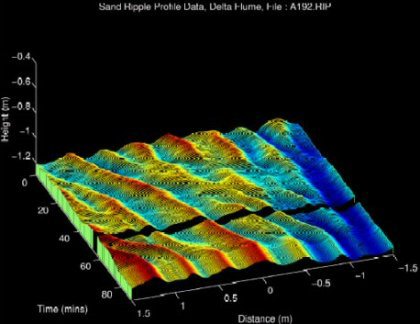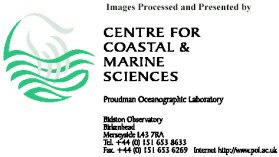Sand Ripple Profiling Sonar

The image above was created from a time series of ripple profiles recorded in the Delta flume in Holland. The gap in the data was for synchronisation purposes. At around 70 minutes the waves in the flume were switched off after which time the ripples remain static.
The Sand Ripple Profiling Sonar may be supplied either as a slave scanning unit or as an autonomous logging version with built in hard disk for data storage. The slave scanning version is controlled by an RS232 link from a master host computer. The host computer sends commands to control the sonars transducer position and sampling parameters and receives digitised data representing the amplitude of the echo returns for each step position of the transducer.
The autonomous version is powered from an external 12v battery supply and has been engineered to take the minimum possible current when powered up but not scanning. The unit may be programmed in the laboratory by connecting a 12v battery and an RS232 lead to a PC running Windows. When programming is complete the unit draws very little power from an internal backup battery until its activation time. The sonar waits until the external 12v supply is present before attempting to capture data at its pre-programmed rate. If required, changes to the units program may be made in the field by connecting a portable PC via the RS232 input. At the end of the deployment period the internal hard disk may be removed and connected to a PC to quickly upload the captured data. Should the external power fail before the logging sequence is complete the data captured up to that time will be preserved.
The acoustic beam pattern, operating frequency and sampling speed have been specially selected for the purpose of accurately recording sand ripple profiles from a position close to the seabed.

|

The Sand Ripple Profiling Sonar is mounted horizontally and gathers data over a section of the sea bed as shown above. The data is processed to record the profile of the sand ripples at intervals as they are transported underneath the sonar by the tidal flow.

To verify the accuracy of the sonar system a plaster cast of a sand ripples was manually surveyed to produce the uppermost image shown above. The Sand Ripple Profiling Sonar was then set up to scan across the plaster cast at 10mm intervals which produced the lower image.

|

